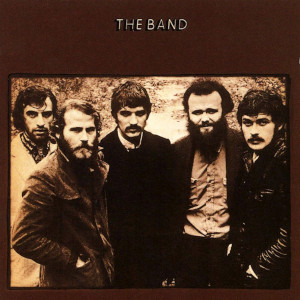
This week, I’ve been listening to Vektroid’s 2011 album “Floral Shoppe” released under the alias Macintosh Plus. This album receives wide recognition for its early and continuing influence on the vaporwave micro-genre. Vaporwave originated in 2010, though was mostly developed through 2011-2012 with albums like “Floral Shoppe” and Chuck Person’s “Eccojams Vol. 1.” via interactions through music-based social networks.
From my outsider perpsective, Vaporwave comes as a human reaction to en-masse pre-millenial nostalgia interpreted through the internet’s kaleidoscope. The methods of vaporwave consist of manipulating samples of ephemera from the rise of cable television in the mid-80s to the emergence of the internet in 2001. Typically, though not always, these samples are looped, chopped, and slowed down. There’s generally tendency to find samples for which the limitations of the medium are evident. We hear not just the music from an old Pepsi commercial, but also the layers of cable broadcast artifacts, the aged VHS tape, and finally the artifacts of YouTube audio compression. The content is just as important as the distance between now and then.
リサフランク420 / 現代のコンピュー
With very rare exceptions, vaporwave artists create their tracks by manipulating samples. They typically choose to sample media that is decidedly dated; musically that early adopters of the internet (late 90s/early 2000s) may find nostalgic. Instrumetation in the original songs tend to feature 80s drum machines and FM synthesis. In this case, Vektroid has sampled Diana Ross’s 1984 cover song “It’s Your Move.”
The samples then get Chopped and Screwed, a hip-hop remix technique developed by DJ Screw in the early 1990s. The “screwed” part refers to slowing down the original sample; This may or may not provide the feeling of drinking sizzurp, or lean (a cocktail made with codeine-based cough syrup). The samples are then chopped by cutting, looping, scratching, skipping, or otherwise interrupting and manipulating the flow of the song. Most vaporwave artists work with computers using DAWs or audio digital audio editors. This gives them further flexibility to alter the sound, often applying echo delay and reverb, and sometimes flange effects.
In “リサフランク420 / 現代のコンピュー,” Vektroid slows down the original sample and employs loops to repeat phrases of the original song. In this way, tracks on the album frequently make the listener feel stuck in time. By denying phrases their original resolution, new earworms are generated. These songs frequently recall the moments that we get a faint memory of something but can’t remember what. The music sits on the edge of background and foreground. In this track, further tunnels of repetition are created through the use of feedbacked delay, allowing the sample artist to build fills from source material that does not itself have a fill.
花の専門店
Vektroid built the third track on the album, “花の専門店’ mostly from samples from “If I Saw You Again” by late-1970s soft rock band Pages. The opening ascending synth arpeggio of the original provides the intro here, though slowed down. Hearing the Floral Shoppe version makes the original seem comically fast. After repeating the arpeggio four times, fading in. At the point the original song starts, this Vektroid throws in a series of rapid cuts mimicking the effect of a skipping CD player. We make a few passes through phases of the song, rapid short repetitions of about about 175 BPM, that’s 1/8th notes of a slow-rock song.
Vaporwave is often not afraid of tempo or rhythm changes. In other sample-based genres like hip-hop, the samples are almost always cut to apply the rhythm of the source material to the rhythm of the new song. Vaporwave often uses this same approach but does not consider it a hard-rule. Exciting, but jarring, new rhythms and textures are created by cutting and looping the original source material to create new rhythms. Time signatures fold in on themselves, erasing expectations and writing new patterns.
数学
I like the seventh track which feels like 90s cyberpunk television and a vaguely sinister dreamworld made of ephemeral memories. The track features slowed and chopped up samples of Dancing Fantasy’s track “Worldwide” from their album of the same name. The original mixes elements of 90s new-wave music that I hate and more atmospheric 90s industrial music, which I like. The strange rhythmic texture sounds oddly familiar, like I’ve heard it in something else. The rest of the original albums sounds like early 2000s JRPG soundtracks, which I love.
It opens with a short sample, looped at slow 72 bpm. With its atmospheric hum and soft metallic percussion, the effect is of a distant giant machine churning late into the evening. When living near a factory and plant, the citizens are constantly aware of their sound and presence of the industrious machines, but overtime they become part of the landscape, ignored.
Further percussions gets layered in. Most of the percussion is gentle, more rhythmic than percussive; all of it is synthetic. Synth woodwinds exchange brief melodic phrases, always with the constant drone of the machine. These waves of late-80s tv and cinema scenes when it was understood that a saxophone singing gently in the night made everything romantically cool, a beatnik shorthand.
The music of vaporwave often embraces these clichés while acknowledging their artificiality. Like being caught in that very brief moment when learning how a magic trick is performed, but still believing it was was real.






